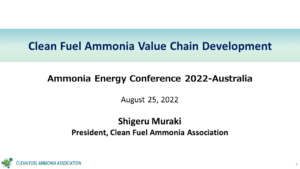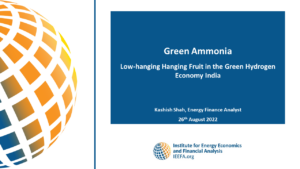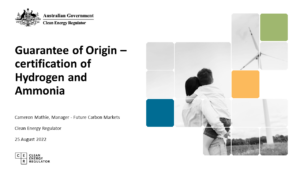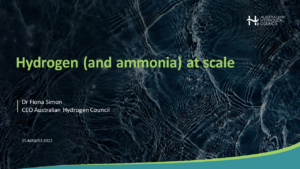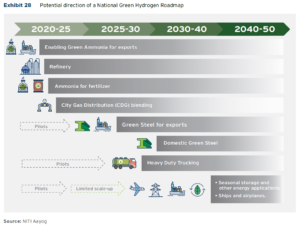Policy
Green Ammonia: Low-hanging fruit in the Green Hydrogen Economy India
The Next 12 Months: Generating demand for green hydrogen and ammonia
Overview of NSW Hydrogen Strategy
Building the EU end of the Australia-Europe supply chain
At this year’s Australia conference, we recognise that interest in Australian ammonia is on the rise. At previous conferences we’ve witnessed the strengthening of ties between Australia, Japan and South Korea, and this year we see a new player emerge. The EU’s growing ambitions have catapulted it into the ammonia conversation, and the nascent of an Australia-Europe ammonia supply chain is quickly developing. To give our audience the EU-perspective, we welcome a terrific virtual panel beaming in live from the Netherlands, Germany and Italy: Jill Thesen (Federation of German Industries), Martijn Coopman (Port of Rotterdam), Anna Fedeles (Austrade) and Anna Freeman (Clean Energy Council). Join us in-person or online, and make sure to register by the end of this week (Friday 29 July) to secure the early-bird rate.
Maritime actors push on with overcoming ammonia fuel safety concerns
Two recent reports (one from Bureau Veritas & Total, the other from the Together in Safety consortium) illustrate just how seriously the maritime industry is pursuing low carbon ammonia fuel. While progress in the maritime ammonia space is impressive, safety risks are widely-acknowledged and work remains to be done.
Both reports identify key hazards facing adoption of ammonia as a maritime fuel, and echo points heard before in the development of methanol & LNG as maritime fuels: high-risk hazards currently exist that must be eliminated, mitigated or controlled. But Together in Safety concludes the way forward will be via collaboration & shared responsibility - something we’re already seeing in the multiple high-profile safety studies and consortia working around the globe. Thankfully, the willingness of significant maritime players to engage on ammonia and the momentum for change are both high.
Harnessing opportunities for deep decarbonisation in India: new report
A new report from Indian government think-tank NITI Aayog and the Rocky Mountain Institute has outlined the enormous opportunity for India to produce renewable hydrogen & ammonia. Ammonia establishes itself early as a key part of this transition: both via the use of renewable hydrogen for fertiliser production, and as a near-term export vector. The report envisions 160 GW of installed electrolysers by 2030, of which nearly 100 GW could be dedicated to producing ammonia. This would make India one of the world’s largest producers of renewable ammonia for export by the end of the decade.
New roadmap for ammonia imports into Germany
A Fortescue-led Australian-German business coalition has released a roadmap and ten-point action plan to meet ambitious ammonia import targets for Germany. Policy recommendations on the EU and Australian side of the emerging supply chain include financial support to address the first-mover disadvantage. Guidehouse have laid out recommendations of their own in a new report, which finds maritime shipping of ammonia over long distance is the best import option, and that - ideally - hydrogen derivatives should be shipped into Germany in the form required by end users, saving on reconversion costs.
Meanwhile in Copenhagen, EU Commission Executive Vice-President Frans Timmermans has backed the shipping industry to make the transition faster than expected, with ammonia to be the “future fuel”.
